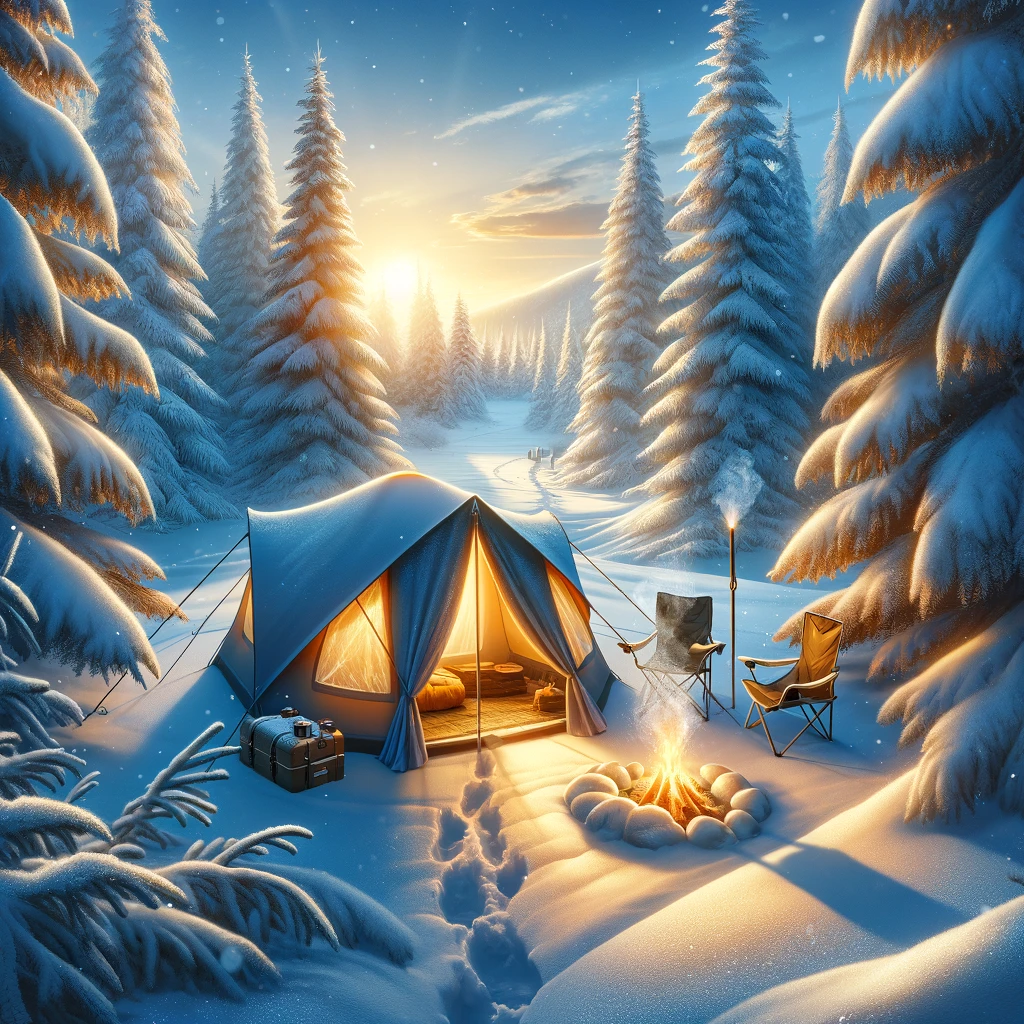Winter camping can be a magical experience, offering serene landscapes and unique outdoor adventures. However, staying comfortable in cold conditions requires careful planning and the right gear. This comprehensive guide will help you make your winter camping trip not just bearable but truly enjoyable and memorable.
Optimizing Your Sleeping System
The key to a good night’s sleep in winter is a well-thought-out sleeping system. Start with a high-quality sleeping bag rated for temperatures lower than you expect to encounter. Down-filled bags offer excellent warmth-to-weight ratios but lose insulating properties when wet. In contrast, synthetic bags maintain warmth even in damp conditions. Consider a bag with a draft collar and a snug-fitting hood to prevent heat loss around your neck and head.
Your sleeping pad is equally crucial. Look for pads with high R-values, which indicate better insulation from the cold ground. Combining a foam pad with an inflatable pad can provide superior comfort and warmth. The foam pad is a barrier against the cold ground, while the inflatable pad offers additional cushioning and insulation. Don’t forget to employ layering strategies inside your sleeping bag as well, wearing clean, dry base layers to bed. A liner can also add extra warmth and keep your sleeping bag cleaner.
Mastering the Art of Layering
Proper layering is essential for maintaining comfort throughout your winter camping trip. The three-layer system is your best friend:
- Base layer: Moisture-wicking materials like merino wool or synthetic fabrics to keep sweat away from your skin
- Insulating layer: Fleece or down to trap warm air close to your body
- Outer layer: Waterproof and windproof shell to protect from the elements
Adjust your layers throughout the day to prevent overheating and sweating, which can lead to dangerous chills later on. Don’t forget to pack extra socks and gloves, as these can get wet easily and are crucial for maintaining warmth in extremities.
Nutrition and Hydration
Staying well-fed and hydrated is crucial in cold weather. Your body burns more calories to keep warm, so pack calorie-dense, easily digestible foods. Hot meals and drinks provide nutrition and help warm you from the inside out. Consider bringing a variety of high-energy snacks like nuts, dried fruits, and energy bars for quick boosts throughout the day.
Keep water from freezing by using insulated bottles or keeping them close to your body. Bring a thermos filled with hot water to make warm drinks throughout the day. Eating snow for hydration is not recommended as it lowers your body temperature; always melt snow before consuming it.
Choosing the Perfect Campsite
Selecting a suitable campsite can significantly impact your comfort. Look for areas sheltered from the wind, such as the lee side of natural windbreaks like large boulders or dense tree stands. Be aware of avalanche risks in mountainous regions and avoid camping in potential slide zones.
If possible, choose a spot that will receive morning sunlight to help warm your camp early in the day. Clear any snow from your tent site to prevent it from melting and refreezing beneath you. Consider the terrain and how it might change with snowfall or temperature fluctuations. Avoid low-lying areas where cold air can pool and create extra-chilly conditions.
Fire Starting in Winter Conditions
A warm fire can be a game-changer for winter comfort. Carry multiple fire-starting methods, including waterproof matches, lighters, and fire starters. Practice building fires in snow conditions before your trip. Create a platform of dry logs or bark to keep your fire off the wet ground, and collect extra firewood to last through the night.
When gathering firewood, look for standing dead trees rather than fallen logs, which are likely to be damp. Keep your firewood dry under a tarp or in your tent vestibule. Remember to follow local regulations regarding fire-building and always practice Leave No Trace principles.
Winterizing Your Gear
Standard camping gear often needs modifications for winter use. Consider upgrading to a four-season tent for better wind and snow protection. Use a white gas or canister stove designed for cold weather operation, and bring a windscreen to improve efficiency. Keep electronics and batteries warm by storing them in a pocket close to your body heat.
Remember to winterize your clothing as well. Waterproof your boots and bring gaiters to keep the snow out. Pack hand and foot warmers for extra comfort during freezing periods.
Safety First
Winter camping comes with additional safety concerns. Learn to recognize the signs of hypothermia and frostbite and how to prevent and treat them. Always inform someone of your trip plans and expected return date. Carry a well-stocked first aid kit and know how to use it. Consider bringing an emergency communication device like a satellite messenger for remote areas.
Planning Winter Activities
Winter camping offers unique opportunities for outdoor activities. Wildlife watching can be particularly rewarding in winter, as animals are more visible against the snow. Snowshoeing, cross-country skiing, or winter photography can add excitement to your trip. Plan your daily routine to take advantage of daylight hours and allow plenty of time to set up camp before dark.
Consider learning new winter skills like building snow shelters or ice fishing to enhance your camping experience. These activities not only provide entertainment but can also be valuable survival skills in emergencies.
Conclusion
By following these expanded tips and properly preparing for your winter camping adventure, you can ensure a comfortable and memorable experience in the great outdoors, even in the coldest months of the year. Remember, the key to enjoying winter camping is being well-prepared and maintaining a positive attitude. With the right gear, knowledge, and mindset, you can transform challenging winter conditions into an unforgettable adventure.

Leave a Reply